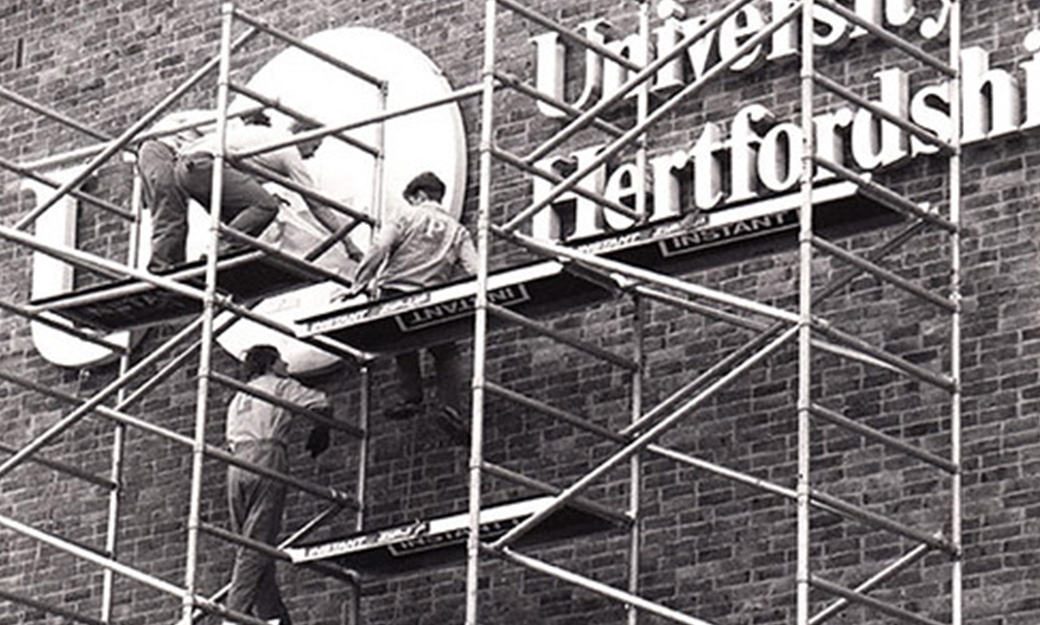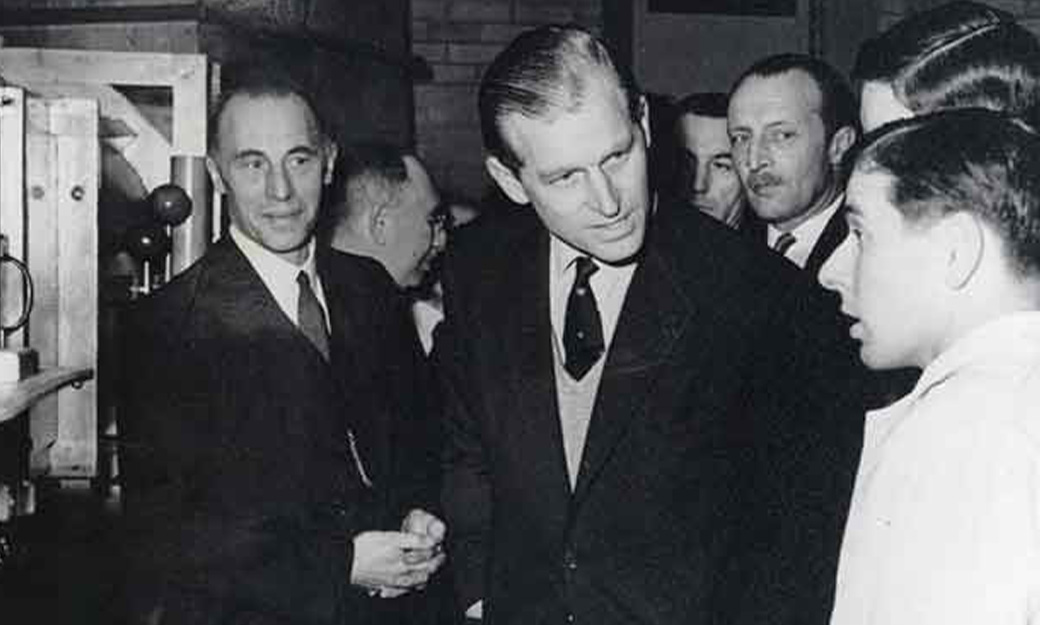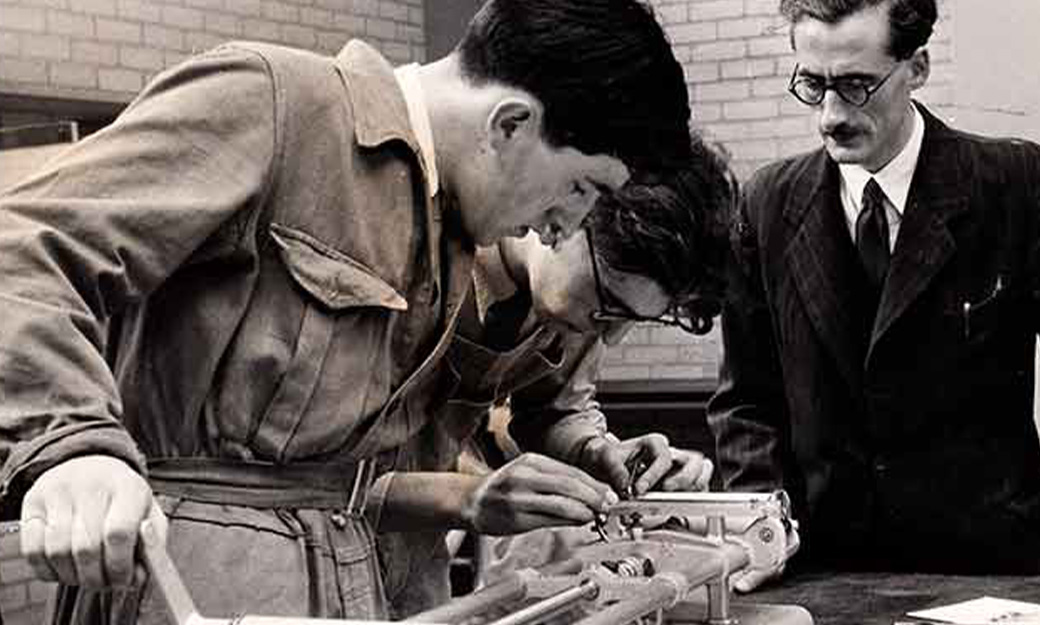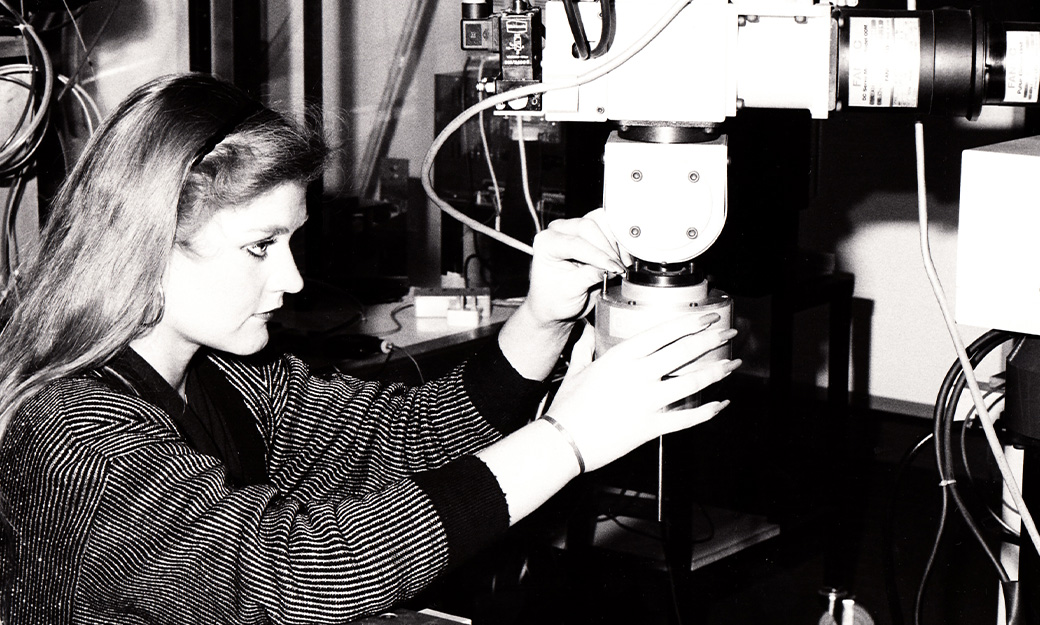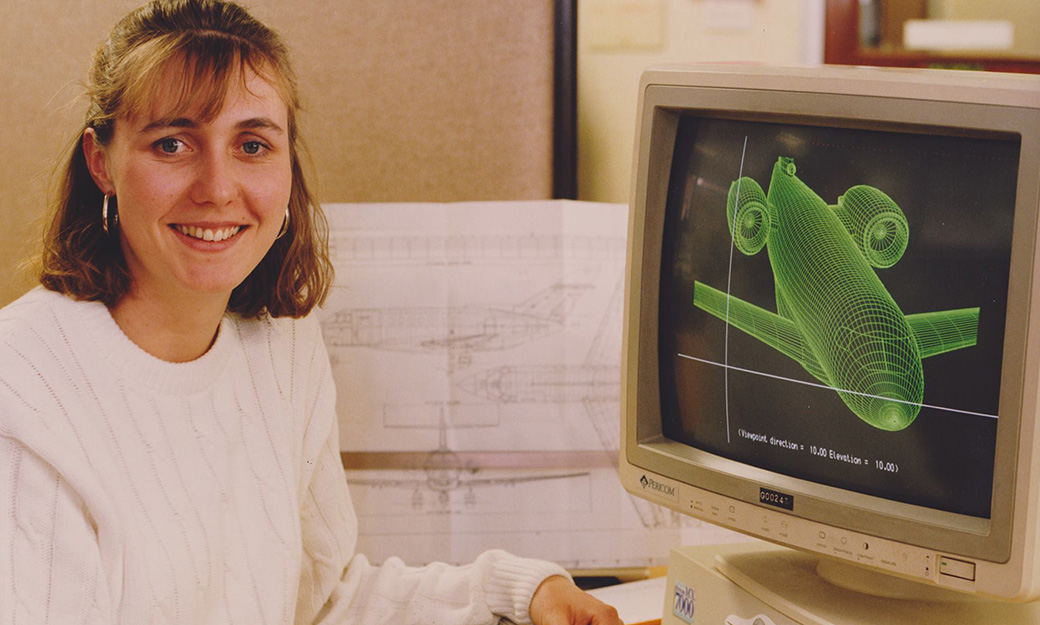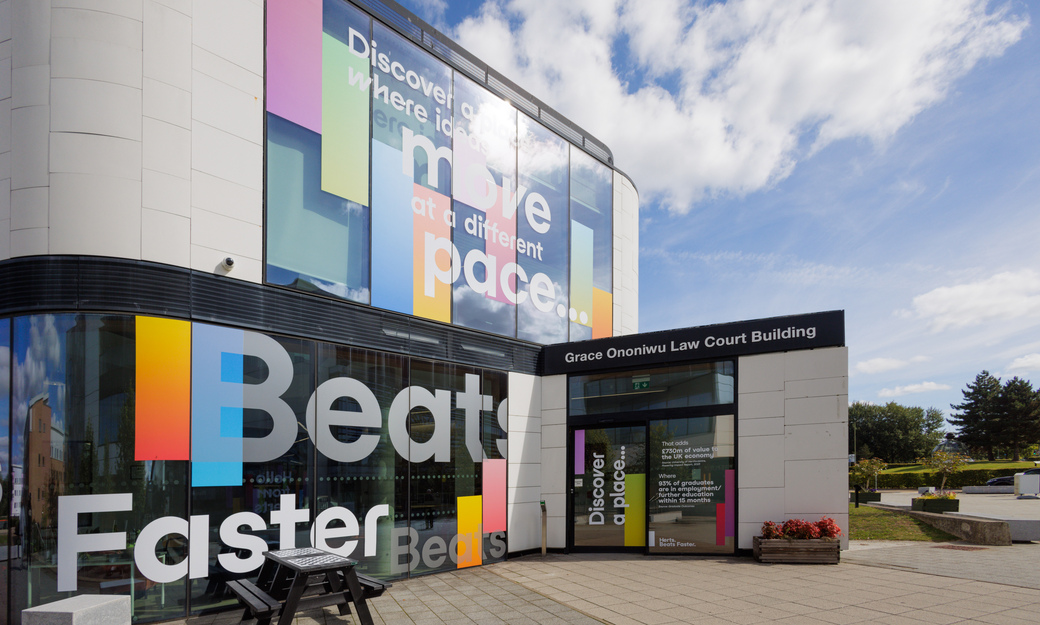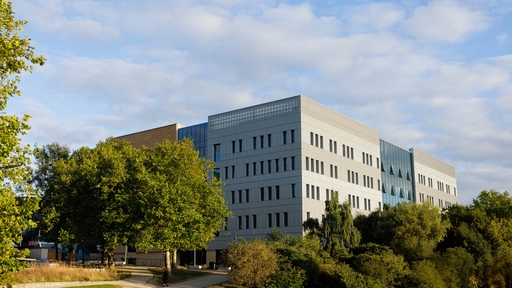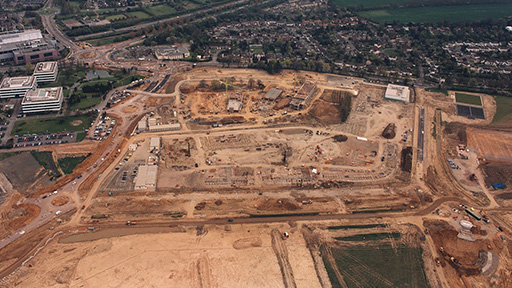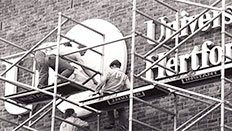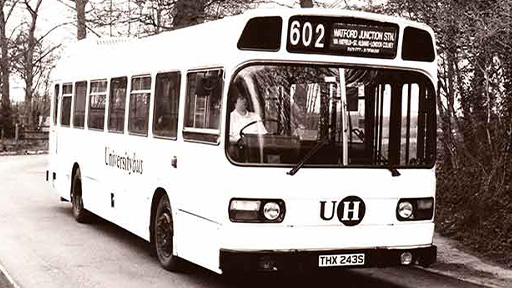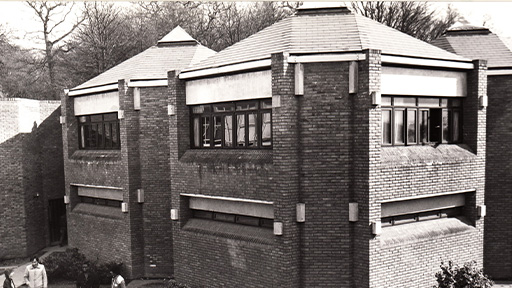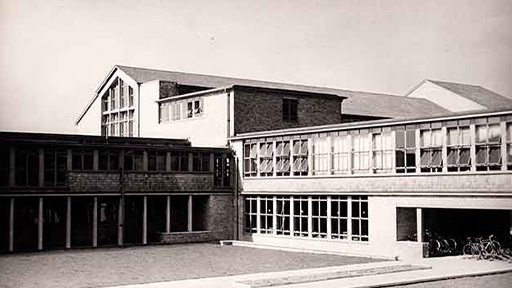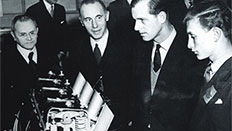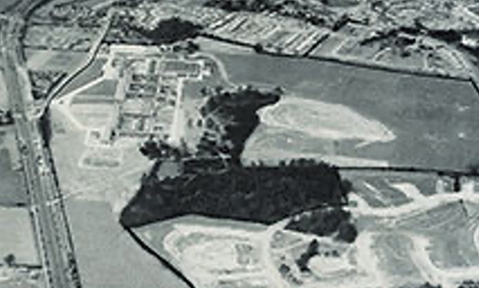The University of Hertfordshire's history and heritage
Transforming bold ambition into impactful achievements for more than 70 years
The University of Hertfordshire has a rich and vibrant history of higher education excellence. From our start in training aerospace engineers for Britain’s aviation industry to our extensive offering today, our focus has always been on understanding what employers want, and what students need to be best equipped for a long, meaningful and successful career, and today, our vision remains unchanged. We are a modern, dynamic, and enterprising university, and an anchor institution in the region, supporting its growth as a top destination for a range of industries and professions.
We’ve come a long way since our founding in 1952 as a Technical College, on land donated by the then Chairman of the de Havilland Aircraft company, AS Butler. Many of our earliest courses were directly related to industry, with an emphasis on mechanical and aeronautical engineering and the natural sciences.
Those firm foundations led swiftly to our expansion, first into a Polytechnic before achieving our full University status in 1992. The legacy of our history can still be felt across the de Havilland Campus, with many of the original de Havilland Airfield landmarks, such as the beacon and the de Havilland Goblin engine, remaining prominent on-site and continuing to define the character of the University.
Should you visit our campus in the evening today, you may see that historic beacon lit up in celebration of one of the many occasions of importance to our 35,000 students who call more than 110 countries home.
The University of Hertfordshire has stayed true to our roots, sustaining our focus on ensuring the employability of our students, providing over 700 career-focused courses aligned with the needs of industry and the public sector. As the only university in the county, we aim to bring the best of Hertfordshire together, collaborating to create better ideas, opportunities and outcomes that make an impact regionally, nationally and globally just as we have done throughout each of our 70 years.
Browse our key achievements and events
We're proud to have come so far, so fast. Explore some of our biggest achievements across the years.
2020-Present
2020
- Herts wins ‘Teaching Innovation of the Year’ at the Student Nursing Times Awards, with positive recognition of how we train adult nursing students and nursing associates to provide transcultural and compassionate end-of-life care.
- Our new £12 million Enterprise Hub is unveiled, significantly enhancing and expanding support provided for regional businesses and providing new learning and study spaces for students.
2021
- The £7.5million Institute of Sport opens on the de Havilland campus, part-funded by a Local Growth Fund investment from the Hertfordshire LEP.
- Herts saw the highest rise of any university in research impact in the latest Research Excellence Framework (REF) results, placing us in the top 25% nationally at 32nd, the highest position for a post-92 university.
2022
- We celebrated 70 years since our founding as a Technical College.
- We secured our biggest ever grants towards our new School of Physics, Engineering and Computer Science building – a £5.8 million grant from the Office for Students towards the construction, and a donation of £750,000 from the Wolfson Foundation towards the building’s biodetection centre.
2023
- We published our Powering Impact report, the first economic analysis conducted since 2014 of our regional, national and international impact. The findings reveal the University contributes £750 million Gross Value Added to the UK economy and supports over 11,000 jobs across the UK.
- It was 50 years since the Common Modular Structure was launched. Hatfield Polytechnic was one of the pioneering institutions adopting a modular structure which became commonplace across the entire higher education sector.
2024
- We received the King’s Award for Enterprise for Outstanding Continuous Growth in overseas sales over the last six years. Considered the UK’s highest business honours, we were one of just 252 organisations – and the only university – to have achieved the accolade in 2024.
- Our £100 million plus building Spectra opened. A home for our School of Physics, Engineering and Computer Science designed with our net zero carbon target in mind. The five-storey building provides a learning, teaching and research experience, inspiring the next generation of leaders in science, technology, engineering and mathematics.
2010-2019
2010
- The University is named as the Times Higher Education Supplement ‘Entrepreneurial University of the Year’.
- The first Alumnus of the Year award is made to Sir Stuart Matthews, a former Aeronautical and Mechanical Engineering student who graduated in 1958.
2011
- The restored de Havilland Beacon, which guided pilots back to the pre-Second World War airfield, is installed at the entrance to the de Havilland campus.
- The £10 million Law Court building opens on de Havilland Campus. The building is awarded Hertfordshire’s Building Futures Award for Most Sustainable Construction.
2012
- The University’s Midwifery Team wins the Royal College of Midwives Annual Award for Excellence in Midwifery Education.
- The Olympic torch travels through the University Campus on its journey from Lands End to the Olympic Stadium for the 2012 Games.
2013
- Work begins on the new Student Accommodation project on the College Lane Campus, over 2,500 attractive new bedrooms, made up of singles, doubles, studio flats and town houses, all built to BREEAM outstanding standards and delivering a true zero carbon project.
2014
- The Hutton Hub opens its doors to students. This unique building brings together all student services in one location, including the Student Centre, Careers Service, Campus Pharmacy and Medical Centre, Student Union and a branch of Santander.
- The University is awarded Bronze level of the Race Equality Charter.
2015
- Flare celebrates 10 years of supporting budding entrepreneurs. Since its launch in 2005, flare has given over 1000 students and alumni the opportunity to develop their innovative business ideas and benefit from the invaluable support and advice on offer from the competition’s supporters.
- The University of Hertfordshire Shanghai Alumni Chapter was established. The Chapter now has three Alumni Ambassadors, over 250 members and has held three successful alumni events in the last year.
2016
- HRH Prince Philip, The Duke of Edinburgh, returns to open the Science Building. It was The Duke’s fourth visit. He first visited in 1952 to open the Hatfield Technical College, our predecessor.
- Alumni Nicki Combarro (BSc (Hons) Physiotherapy, 1996) supported Team GB athletes at the Olympic Games in Rio 2016. Nicki was also the Team England physiotherapist for the Commonwealth Games in Glasgow 2014, Delhi 2010, Melbourne 2006 and Manchester 2002, and has been selected to lead Team GB’s physiotherapists at the 2018 Winter Olympics in South Korea.
2017
- The University of Hertfordshire celebrates 25 years as a University.
- We have a student community of over 24,600 on UK based programmes including more than 3,800 international students, and more than 6,400 students studying our courses outside the UK.
2018
- Our Hertfordshire Sports Partnership has provided more than £4,000 funding to assist initiatives across Hertfordshire and encourage more female participation in sport.
- The 'US Culture and #BlackLivesMatter' module is launched as part of the MA in Literature and Culture degree. The module is the first of its kind in the UK, enabling students to learn about the significance of the movement through the study of contemporary cultural texts.
2019
- Secured £1.1 million to set up a new University Enterprise Zone to support start-up and small businesses and increase economic growth, employment, and investment in the county.
- Launched the Hertfordshire Law Clinic, to offer pro bono support to the local community, and provide invaluable practical learning experiences for our law students.
2000-2009
2000
- Work begins on the building of the new de Havilland campus at Hatfield on a site formerly occupied by British Aerospace.
- Astronomer Patrick Moore opens the newly upgraded Bayfordbury Observatory, which includes eight optical telescopes housed in domes. The rotunda building is named the Patrick Moore Building in his honour.
2001
- The University achieves high ratings in the Research Assessment Exercise (RAE) for Psychology, Computer Science and Physics and demonstrates the enduring contribution of English Literature.
- The Key Centre, a multi-faith, multicultural centre, is opened by Lady Rosalind Runcie, widow of the late Robert Runcie, former Bishop of St Albans and Archbishop of Canterbury.
2002
- The College Lane campus Learning Resources Centre is awarded both the SCONUL Design Award for 2002 and the RIBAS East Spirit of Ingenuity Award 2002 for its pioneering design.
- The School of Engineering installed a flight simulator designed as a teaching tool to enhance understanding of key aspects of aircraft performance, stability and control.
2003
- HRH Prince Philip, Duke of Edinburgh opens the new £120 million de Havilland campus.
- The £15 million Hertfordshire Sports Village complex opens on the de Havilland site.
2004
- The University receives the Queen’s Award for Enterprise in International Trade.
- Seven Paralympic athletes train at the Hertfordshire Sports Village in the build-up to the Athens Olympics; they bring back seven medals between them, including a bronze medal in swimming for Hatfield Swimming Club member Jody Cundy.
2005
- The Hertfordshire Law School introduces a ‘pro-bono’ clinic for members of the public seeking legal advice.
- Universitybus changes its name to Uno to reflect its service to the general public as well as staff and students.
2006
- The University introduces a three-year pre-registration BSc (Hons) Dietetics course with integrated work placement – the first of its kind in the East of England.
- Over 1,000 people attend the Grand Ballroom of the International Convention Centre in Shanghai for the University’s first graduation ceremony in China. This is the largest graduation ceremony ever held overseas by a UK university.
2007
- The University enters the first ever Hydrogen-Powered Formula Student Racing Car in the UK Formula Student event.
2008
- The School of Nursing and Midwifery introduces a shortened work-based Midwifery Programme, a first within Midwifery education.
- The University receives its first nomination for the Times Higher Education ‘University of the Year’ Award.
2009
- The new £38 million entertainments venue, The Forum Hertfordshire, is opened.
- The University enters the first wholly electric Formula Student car in the UK Formula Student event and wins the prize for lowest carbon production.
1990-1999
1990
- Professor Maureen Lahiff is appointed the Professor of Nursing and Midwifery Studies, the first female Professor at the Polytechnic.
- Hatfield Polytechnic wins a contract with the North-West Thames Regional Health Authority to provide degrees in Diagnostic Radiography and Radiotherapy.
1991
- The Polytechnic forms an Associate College Network with Hertford Regional College, North Herts College, Oaklands College and West Herts College, with the first courses introduced in September 1992. Students are able to study for University degrees by spending their first year at their local college as an access route into higher education.
1992
- Hatfield Polytechnic becomes The University of Hertfordshire (29 June 1992).
- We have more than 9,000 students and a turnover of £48 million.
- The University is the first to run its own bus service, named Universitybus and set up to address the problems of poor public transport for students and staff travelling east to west across the county.
1993
- The University’s School of Health and Human Sciences introduces courses in radiography and physiotherapy.
- The Great Hall is renamed as The Prince Edward Hall in honour of the visit of HRH Prince Edward to commemorate the new status of the University of Hertfordshire and the University’s 40th anniversary.
1994
- The University is named ‘Top New University’ in The Times Good University Guide.
- UHArts is launched to raise the cultural profile of the University. The first event is a performance of works by Dvorak and Smetana by the Symphony Orchestra of Bohemia.
1995
- The University is the first in the UK to offer a degree-level course for registered paramedics.
- A formal agreement is signed with the INTI College in Malaysia, allowing the College to provide accredited university courses.
1996
- The University’s Centre for Research in Primary and Community Care (CRIPACC) is established with initial funding support from the Department of Health.
- The first degree ceremony is held in Kuala Lumpur, the capital city of Malaysia, in response to the large number of students from Singapore and Malaysia.
1997
- The four-storey £16 million Learning Resources Centre, designed by Architects Co. Partnership, is opened. Building magazine headlines the opening with ‘One day, all libraries will be like this’.
- HRH Prince Philip, Duke of Edinburgh, returns to the University to unveil a statue of Sir Geoffrey de Havilland. The guests include Olivia de Havilland, the actress and cousin of Sir Geoffrey, and former employees of the de Havilland aircraft factory.
1998
- The University competes in the first ever Formula Student competition held in the UK. The team wins the prize for the Best Presented Team.
- The University introduces the first BSc (Hons) Paramedic Science degree in the country. This course is commissioned by the London Ambulance Service.
1999
- Exemplas Ltd is established as part of the Business Link initiative to offer skills and business support to local companies.
- A team from the University entered a robot named Behemoth in the popular BBC2 programme 'Robot Wars'. The model was built by two students, Kane Ashton, a computer scientist, and Anthony Pritchard a model maker.
1980-1989
1980
- A free inter-site bus is introduced to connect Balls Park and Hatfield. Fares are introduced in September of this year.
- T G (Gurney) Mercer becomes Chair of Governors. Later the newly built administrative hub of the Polytechnic is named after him.
1981
- Hatfield Polytechnic is the first to introduce short courses in Genetic Engineering.
1982
- Dr John Illston PhD DSc (Eng) CEng FICE is appointed Director of the Polytechnic. He first joined the Polytechnic in 1977 as Director of Studies, Civil Engineering.
1983
- The National Centre for Reprographic Documentation is changed to CIMTECH, the National Centre for Information Media and Technology.
1984
- The Polytechnic has 5,252 students, 824 members of staff and a turnover of £12 million.
- The Sports Hall on the Hatfield site is opened.
1987
- Professor Neil Buxton, an economics historian and former Scottish hockey international, is appointed Director of the Polytechnic.
- The Polytechnic merges with the Hertfordshire College of Higher Education.
1988
- The Polytechnic becomes one of only eight polytechnics accredited for research degrees.
- Nursing as a discipline is introduced to the Polytechnic as academics from Stevenage College merge their programmes into the Health and Social Work Group.
1989
- Private developers begin work on three buildings between the newly opened A1(M) and College Lane. They are leased by the Polytechnic and are named the Todd, Lindop and Mercer Buildings in honour of the Polytechnic’s former Visitor, Director and Chair of Governors.
- The Polytechnic is given corporate status, removing it from County Council control.
- We have 6,500 students and a £31.5 million turnover.
1970-1979
1970
- The Astronomical Observatory, housing a sixteen-inch multi-purpose telescope, is formally opened in the grounds of Bayfordbury Mansion.
- The best equipped and staffed Computer Centre in the public sector in education is formed, and, following the purchase of a DEC PDP-10 costing £256,500, the first multi-access computer system in education – linking schools, colleges and the Polytechnic – goes live.
1971
- The Polytechnic occupies the former Hatfield School building. The south building is named the Hutton Building, in honour of the first headmaster of Hatfield School, Dr Kenneth Hutton; it is one of the first technical schools to be built under the provisions of the 1944 Education Act.
- A new Hall of Residence is opened: Chapman Hall, named in honour of founder principal of the College, Dr W.A.J. Chapman.
1973
- The Polytechnic introduces the Common Modular Structure, which allows for a wider choice of courses taken across different departments.
- BA Humanities degree is introduced.
1974
- Two new Halls of Residence are opened: Sidney Broad Hall, named in honour of Sidney T. Broad, County Education Officer (1957–73); and John Coales Hall, named in honour of Professor John F. Coales, founder Governor of Hatfield Technical College.
- The Students’ Union moves into the Hutton Building. A new bar, named The Font, is opened.
1975
- The Polytechnic is reorganised into five schools of study and a Centre for Management Studies.
- Julia Schofield becomes the first totally blind graduate in Computer Science in the UK.
1976
- Wall Hall and Balls Park teacher training colleges merge to form the Hertfordshire College of Higher Education.
- The Students’ Union Oracle Bar is renamed the Vale Bar in honour of Bar Steward Vic Vale, who died during the year.
1977
- The Students’ Union Social Centre is opened, which soon becomes known as the ‘Elephant House’ due to its unusual design.
- Over 10% of the 4,000 students at the Polytechnic are from over 40 different countries.
1978
- The Polytechnic takes possession of Balls Park, which offers additional space for the teaching of Business Studies and Social Sciences.
- A degree in Combined Studies is introduced.
1979
- Alan McCall is awarded the first British CNAA-approved PhD in Astronomy.
1960-1969
1960
- The Hatfield Technical College is renamed Hatfield College of Technology.
1963
- The Robbins Report, which calls for doubling the numbers of students in higher education by 1980, is released.
1966
- The first female students to be awarded a BSc degree in Engineering (CNAA) by the College are Miss B E Murphy and Miss P D Baker.
1967
- Hertfordshire County Council approves the use of Bayfordbury Mansion as additional teaching space for the College.
1969
- Hatfield College of Technology is designated as Hatfield Polytechnic.
1950-1959
1952
- The official opening ceremony of the Hatfield Technical College is performed by HRH Prince Philip, Duke of Edinburgh
- The College appoints 22 members of staff and offers the Higher National Certificate mainly in engineering, but also in business management, science, mathematics and a range of technical courses
- A total of 1,738 students enrol at the College – 55 full-time and sandwich, 813 part-time, 870 evening.
1953
- Hatfield Technical College’s Dramatic Society gives its first performance: a production of Ring Round the Moon by Jean Anouilh.
- The College mounts its first exhibition, celebrating the England of Queen Elizabeth I and the newly crowned Queen Elizabeth II.
1955
- The First College Rag Day is held.
- The National Council for Technological Awards (NCTA) is established.
1956
- The first computing course is provided. The specialist short course is called ‘The Application of Computers to Automation’.
1957
- The Hatfield Technical College has a total of 3,847 students.
1958
- The first students to be awarded the degree of BSc (Engineering) as external students of the University of London are N. Cadoux-Hudson, J.E. Hackett, A.E. James, I.J. Langley, A. Stephenson and D.H. Wilkinson.
- Two teams enter the Daily Mail Bleriot Centenary Cross-Channel Race, from Marble Arch to the Arc de Triomphe and home again – the only college or university teams to participate.
1940-1949
1941
- Hertfordshire County Council enters into partnership with the de Havilland Aircraft Company to train fifteen- and sixteen-year-old aircraft apprentices.
1944
- Alan S. Butler offers to donate ninety acres of land at Roe Green, on condition it be used for further educational purposes. The offer is accepted by Hertfordshire County Council in May.
- Hertfordshire County Council responds to the 1944 Education Act requirement to restructure secondary education with a comprehensive plan for technical and further education within the county.
1945
- The first post-war emergency women’s teacher training college is established at Wall Hall, Aldenham, and opened by R.A. Butler, Education Minister.
1946
- The New Towns Act, designed to meet the housing needs of a bomb-damaged London, poor-quality national housing stock and a growing population, sees an extensive building programme within Hertfordshire including the New Towns of Hatfield, Hemel Hempstead, Stevenage and Welwyn Garden City.
- The Deed of Gift and Conveyance resulting from Alan S. Butler’s offer is signed: ‘the County Council shall and will establish and maintain on the land hereby conveyed a college for the provision of further education (with special regard to education of a technical type) and with such provision (if any) for secondary education (of such a type as aforesaid) as the County Council may deem necessary or desirable’.
1949
- Dr W.A.J. Chapman is appointed first Principal of Hatfield Technical College.
Have you been part of our history?
We'd love to hear share the many stories and experiences from those who have been part of our history. Please email us at corporatecomms@herts.ac.uk if you'd like to share yours.
More information
If you are interested in local and regional history, you may also find the Heritage Hub a good source of information.
